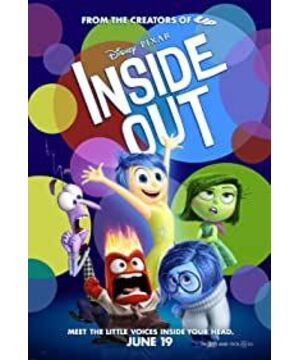For me, this film lacks some "conflicts", all the difficulties come from "the road is too far", the screenwriters even boldly abandoned the "villain" setting, the protagonists will only encounter objective difficulties, not at all Man-made obstacles make the plot less urgency and interesting. And the biggest "crisis" of the film-the little girl is running away from home-is also a bit weak. As an audience, I don't want to worry about you. As an 11-year-old child who advocates independence and self-reliance, is he just taking a bus to return to his hometown where he had just left for a week? Who hasn't ran away from home, who hasn't yelled at his parents, isn't the end of the world, shouldn't it be enough to live like that optimistic villain every day?
The biggest problem may be the relationship between the little girl and the five little people. The villains said that they are the guardians of the little girl, but from the performance of the film, they can directly manipulate the little girl at any time-"Could it be that the child is just a game of Sims played by these five little people?" When I asked this question , Can no longer enter the play. But brain emotions are indeed largely out of conscious control, and it makes sense to think so.
PS: Although the last egg is interesting, it actually deviates from the setting of the whole film a bit. The five little people in the little girl's head basically observe and control the little girl from a third party's "objective" perspective, while the little people in the easter eggs mainly speak out the characters' own hearts. For example, the villain in the head of the clown said, "I went to drama school for six years, and I just did this." If you follow the previous setting, he will probably say "Attention, he is slouched again, and thinks of the drama school. We I have to give him a sweet memory..." or something.
While the brain hole hadn’t collapsed, Hu wrote a few possible adaptations:
Regular version: The terrifying clown in the subconscious was promoted to the villain, after escaping from the subconscious cage, trying to replace the five villains to control the little girl’s entire consciousness, so that she would only be There is endless fear and retreat. The clown further merged with all the things that the little girl was afraid of, and once tempted the fear villain in the middle, and finally the five villains united and defeated the heroic story of the clown monster.
Infighting version: It turns out that everything is a conspiracy to hate the villain, she has long been unaccustomed to the optimistic villain's flamboyant style. At this moment, she has taken the lead and has successfully transformed the little heroine into a white-eyed beauty who can't understand anything. The optimistic villains came back through all sorts of hardships, but they couldn't prove that they had innate dominance, so they decided to let the little girls choose for themselves without any interference from the villains.
Dark version: In fact, the optimistic villain who has never left the brain control center finds that there are many different places in the brain structure from the book, until entering the subconscious prison and discovering that there is a huge control organization, and they usually operate The console is also connected here. It turns out that the actual organization that manipulates the little girl is subconscious. The reason why they are left behind is just to do some chores. The optimistic villain finally understands the reason why the orders he has given are invalid from time to time. What's more dangerous is that the subconscious doesn't love the little girl like the few of them, but just treats her as a toy. . .
Neidou version 2: The little girl's imaginary playmate BingBong rushed to the control center ahead of time and helped the remaining three villains to cope with the new life in a naive but innocent and straightforward way. BingBong, who accompanies the little master again, is extremely happy, but while waiting for the optimistic little people to return, BingBong learned from the books in the control center that the final result of all imagined playmates is to fall into the abyss and be forgotten, unless they are destroyed. A certain organ keeps the owner's mind in his infancy forever. The choice between life and death, where should BingBong go. . .
Bad version: Every year, the little people in their brains have a world emotion game, which is more pure than who can control the owner to show a certain emotion. The little girl’s father’s villain decided to show anger, and her mother decided to show disgust, while the little girl was optimistic and sad. Yes, she was finely divided. In reality, fathers continue to use greater anger to suppress mothers’ escalating disgust, while little girls use increasingly exaggerated optimism to accept or even enjoy this terrible family life-occasionally falling into extreme depression. middle. The chaos escalated, and the remaining consciousness of the three people was also looking for a solution. . . . Until one day, the three of them suddenly returned to normal. Yes, the competition was over, and for another year, none of the villains in this family won the prize. In reality, the family hugged each other and wept, celebrating that their efforts have returned their love for each other, but today, next year, everything will repeat itself. . .
View more about Inside Out reviews











